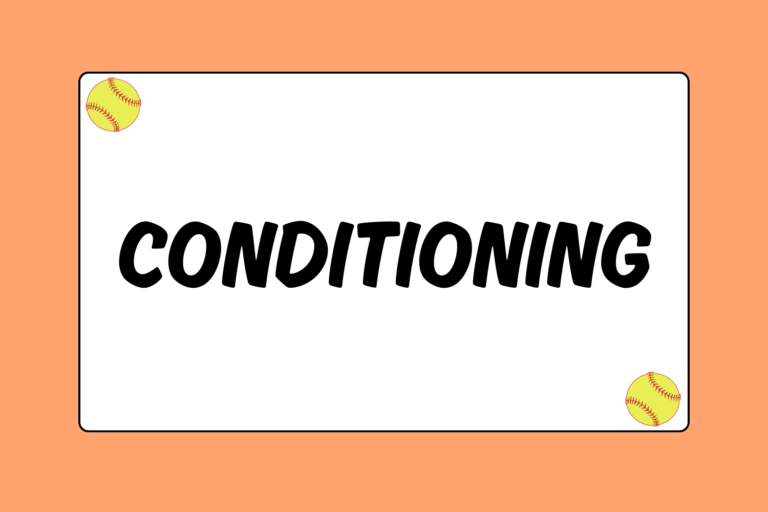Playing outfield isn’t as easy it looks — you’re responsible for everything that hits the green. Whether the ball is heading towards the fence or falling short in front of you, if it’s in the air, it’s your responsibility to make the catch. This can be a tough task sometimes. Not only do you have to deal with a blinding sun, but there’s also wind to blow the ball off its course and a fence that will stop you in your tracks — whether or not you’re ready for it.
Every outfielder, then, needs to learn how to track the ball. Tracking is just as important as having speed in the outfield, if not more so. Being able to track the ball will allow you to catch the ball, and it can be the determining factor for a celebrating a win or suffering a loss. Dropped fly balls are killers for a defense. So no matter the situation, you have to know how to track the ball correctly in the outfield. Follow along with the tips in this guide, and you’ll be the most reliable outfielder on the green.
Drop Step
The most important skill for being able to track a ball is a good drop step. Remember, the first step is always back — never forward. You may not realize it, but one step makes a world of difference in the outfield. It takes a long time to redirect your momentum if you misread a ball. This is an easy concept, but fly ball tracking is still often underestimated in a player’s arsenal of fielding skills.
To drop step, step one foot backwards and angle your body in the direction you stepped. For example, if the ball’s flight path is to your left, drop step with your left foot and angle your body to the left. If the ball is hit directly over your head, drop step with your glove-side foot.
The drop step is not a huge leap backwards. Stay balanced and simply step your foot back directly behind you. As you step, turn your upper body and hips in the direction of your step. Your drop step should develop into a habit so that even on a foul ball to the catcher, your feet are reacting.
Sprint Back
When you drop step and start going for a ball, sprint! There are three things you want to remember while you are sprinting for a ball:
- Tuck your glove: Running with your glove flailing in the air will only slow you down. Tuck your glove into your chest and raise it to make the catch at the last moment.
- Run to where the ball is going, not to where it is: Never run directly to the ball. Instead, sprint to where the ball is going. Imagine that you are rounding behind it so that you settle under it coming forward.
- Be behind the ball, coming forward as you catch it: If you are behind the ball and coming forward when you catch it, you can go directly into your crow hop for added momentum to your throw. Keep your feet moving as you’re waiting for it to drop, and then start your crow hop as you catch the ball.
Practice with Fly Patterns
The best way to learn the proper techniques for tracking fly balls is to practice. So, grab a partner and head over to a foul line in the outfield:
- Have your partner start with the ball, standing behind the foul line.
- You will start in fair territory, facing your partner.
- Your partner will raise the ball and point it to the left, right, or straight up. Where she points will determine what you do:
- She points the ball to the right: Drop step to your right, then turn and start sprinting back.
- She points the ball to the left: Drop step to your left, then turn and start sprinting back.
- She points the ball straight up: Drop step to your glove side, then turn and start sprinting.
- While you are sprinting back, keep your ears open. Your partner is going to yell “Ball!” At that point, you can turn to track the ball. The easiest way to track the ball is to turn towards your glove-side and look over your shoulder. However, if the wind takes the ball to the opposite direction of where you drop stepped, you can do one of two things:
- Stutter step and turn toward the ball’s new direction by opening your chest to the ball.
- Tuck your chin and turn your head over the shoulder that is opposite of the direction of the ball. For example, if the ball is moving to the left, tuck your chin and turn your head over your right shoulder. Take your eyes off the ball for a split second, turn your back to it, change direction and immediately turn your head to re-track the ball. This option is faster if the ball is far away, because it prevents the risk of getting your feet tied up when you stutter step.
- Track the ball, catch it, and then toss it back.
- Repeat until you are comfortable tracking the ball.
If the fly balls were easy (unmoving), repeat the drill with an increase in the difficulty of the throws. Have her raise the ball in one direction, but throw it in the opposite direction so you can practice the stutter step and the head turn in order to move your feet and re-track the ball.
Prepare for the Wind
If the ball is high and there is wind, expect the ball to move. Because of this, you have to know how to cut down on the time it takes you to adjust your feet when the ball moves. There are two common ways to do this:
- Keep your eyes on the ball and continue sprinting back for it. When the ball moves, keep your chest facing the ball and switch your feet so you’re angled towards the other side. Think of drop-stepping to the other direction mid-stride as you go back for the ball. Your eyes will never leave the ball, so be careful not to stumble as your feet switch positions.
- The second way is a bit trickier because your eyes will leave the ball. When the ball moves out of its original path, tuck your chin and immediately turn to the side where the ball is. For example, if you have drop-stepped to your left and the wind pushes the ball to the right, simply tuck your chin and turn your body and head to look over your right shoulder. You’ll have taken your eyes off the ball for a second, but your momentum will remain.
Hot Tip: Block the Sun!
As an outfielder, the sun will be in your eyes at one point or another. The key is to know how to play in the sun. If you don’t like visors, wear sunglasses and eye black. Polarized sunglasses will be the best in the outfield. If you still can’t see the ball, or if it gets lost in the sun, use your glove. Block the sun directly with your glove and keep your eye on it. If the sun is so bad that you lose sight of the ball, make sure to communicate with your teammates by yelling that you don’t see it.
Be Smart at the Fence
If you’re playing with an outfield fence, know that you can’t run back forever. You will meet that fence sooner or later, so you need to be prepared for that.
- Use the warning track: If your field has a warning track, figure out how many strides you can take through it before you meet the fence (usually two or three). If you get familiar with this, you can sprint back and you’ll know exactly how far away (in terms of strides) you are from the fence once you feel the dirt. If there is no warning track, you’ll have to rely on the next tip a lot.
- Extend your throwing hand back: Whether or not there is a warning track, once you think you are getting close to the fence, slow your stride, extend your throwing hand back, and try to feel for it. This will give you immediate feedback as to how close you are — that is, you’ll at least feel the wall with your hand before crashing into it.
- Jump at the last moment for homeruns: If the ball is going over the fence, don’t give up just yet! Use the fence as a brace and jump up at the last moment and reach for it. Who knows? You could take away what would have been a home run!
Catch It!
With the tips in this guide, you’re now better prepared to track down fly balls. It is a lot easier to come forward than it is to go back, so if the ball happens to drop in front of you, simply sprint forward. Don’t worry, even with a drop-step back, you’ll have time to recover and catch most shallow hits. However, stepping forward first will prevent you from catching a ball that is over your head, no matter how well you can track it.
If you’re still intimidated by the fence, have a friend or coach help you. Start about six strides away from the fence, have a partner toss fly balls for you to catch as you navigate the wall. The key is to get comfortable. With this drill, you can practice everything — your drop step, tracking, and feeling for the fence. Tracking is a skill that comes with repetition; the more time you spend in the outfield, the more comfortable you’ll be. Ultimately, your tenacity and your ability to track will determine how many fly balls you chase down.





